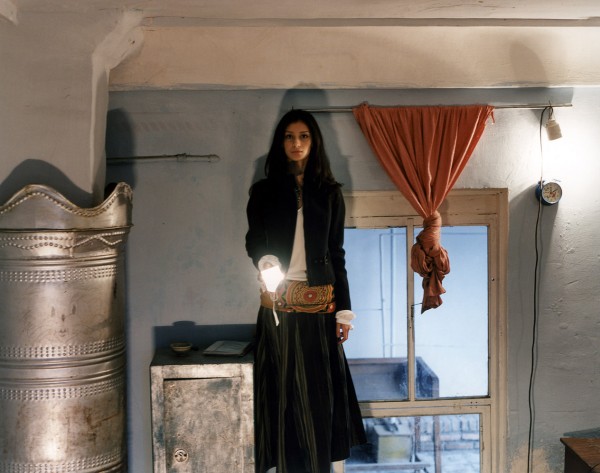
Knicknamed Holy Bukhara, Noble Bukhara, Dome of Islam, Religion’s Pillar, Mind’s Beauty, Bukhara was the city of fire worshipers and the centre of the Persian rennaissance and Islamic science. The town welcomed various religions such as Zoroastriasm, Shiite and Sunni Islam, Orthodox and Catholic churches, Buddhism, and Judaism. With populations such as the Greeks, Persians, Mongols, Arabs, Russians and cultures such as the Chaybanide, Djanide, Manghit and Oongrat dynasties.
Bukhara is stuck in time, being one of the Orient’s most secluded and best preserved towns. A place of fantasy where Alice in Wonderland would have felt at home.
All the images in this body of work are set up. The places in the photographs were chosen for their historical value such as the Palace of the last Emir of Bukhara, or Kalon mosque and tower, the jewelers bazaar and the town’s grand bazaar. Ravshana Kurkova, who figures in each image, is the last of a line of famous Uzbek actors and is one of the new up and coming Russian / Uzbek film stars.
Each scenario has a link to Bukhara’s past or present. When Ravshana is carried by soldiers infront of Kalon tower it is in reference to Emir Abd Allah who entered the town carried by his soldiers sitting on a carpet when he came to power in 1583. The photograph of Ravshana playing with fire refers to Bukhara’s Zoroastrian fire worshipping period introduced in 329 by Alexander the Great. In reference to contemporary Bukhara, Ravshana undresses infront of a young policeman in his office. In this muslim society where the woman should hide her sexuality he is intimidated by her nerve. Here the power roles are inversed and the much feared police authority is made fun of.

Sitorai-Makhi-Khosa palace, Bukhara, Uzbekistan